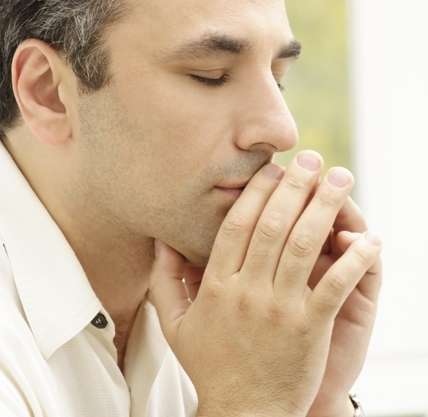Understanding Anxiety
Anxious feelings are normal and a healthy part of life. You probably notice an increase in anxiety before public speaking or meeting a new person; however, if anxious feelings become persistent and overwhelming, or your anxiety starts to interfere with your day-to-day life, you might be struggling with an anxiety disorder.
Anxiety is the most common mental illness in the United States. The National Institute of Mental Health (NIMH) estimated that about 19% of adults experienced an anxiety disorder within the last year.1,2 Types of anxiety disorders include generalized anxiety disorder (GAD), panic disorder, obsessive-compulsive disorder (OCD), post-traumatic stress disorder (PTSD), social anxiety, and separation anxiety.
Does Anxiety Therapy Work?
Anxiety therapy provided by a trained therapist using techniques appropriate for the individual and their specific needs can be beneficial to improve symptoms. However the extent of symptom improvement, the pace at which symptoms improve and the end results vary between each person.
There is no one-size-fits-all approach to treating anxiety. Treatment for anxiety needs to be chosen based on the individual’s specific symptoms. In some cases, the treatment will need to be individualized to combine aspects of different modalities.
Online Vs. In-Person Therapy for Anxiety
With the availability of online therapy and in-person anxiety treatments, each person must determine which option is best for their specific needs.
Online therapy pros:
- Convenient
- Widely available
- Saves on indirect expenses like gas and childcare
Online therapy cons:
- Missing the personal connection to the therapist
- May lack real time audio or visual communication
- May be interrupted by technical difficulties
- Therapist may miss important details (through body language) of your presentation if you are not face-to-face
In-person pros:
- Therapist can observe you fully
- A chance to enter a calm and trusting environment
- Better opportunity for clear communication and understanding
In-person cons:
- Can be expensive with travel and childcare costs
- Limited appointment availability
- Taking too much time out of the day
- Conflicts with work or school schedule
1. Cognitive Behavioral Therapy (CBT)
CBT is the most commonly used approach to treat essentially any type of anxiety disorder because it’s been extensively researched and shown to be effective.4 CBT for anxiety is a hands-on approach that helps individuals change their thinking and behavioral patterns, gain skills to navigate difficult situations, and maintain a sense of control and confidence.
2. Exposure Therapy
Exposure therapy is a form of CBT that helps individuals overcome their fears. The therapist works with the client to gradually face stressful or scary situations/stimuli and “rewire” the brain to reduce fear responses. It teaches coping skills and introduces new thought patterns. Different forms of exposure include imaginal exposure, in vivo exposure (facing the situation in real life), and virtual reality exposure.
Exposure therapy is often used as a treatment for specific phobias, such as a fear of being on an airplane, fear of snakes, or fear of needles/injections. Exposure therapy can also be used for more general situation-specific situations, such as social anxiety, separation anxiety, panic disorder, generalized anxiety disorder, and PTSD.
A subset of exposure therapy, called exposure response and prevention therapy (ERP) is sometimes used to treat OCD by helping the person recognize and face their fears, and then interrupt any obsession and following compulsions.
3. Acceptance and Commitment Therapy (ACT)
ACT is another effective modality of treatment for anxiety. It helps individuals to identify their values and act in ways that align with their values through acceptance and mindfulness techniques.5 ACT has been used to effectively treat social anxiety, testing anxiety, and OCD.
Elements of ACT can be combined with other treatment modalities to address symptom combinations specific to individuals. An example would be generalized anxiety that prevents a person from engaging with others and situations in a way that aligns with their values.
4. Dialectical Behavioral Therapy (DBT)
DBT is a form of CBT that helps clients balance thoughts and situations that feel opposing (e.g., accepting that you have anxiety while working to improve your management of anxiety) by engaging in mindfulness, increasing distress tolerance, increasing emotional regulation and interpersonal skills. DBT is effective in treating generalized anxiety disorder, panic disorder, PTSD, and OCD.7,8
5. Eye Movement Desensitization and Reprocessing (EMDR)
EMDR helps individuals reprocess traumatic life experiences using the brain’s natural healing process. The therapist guides the client through bilateral stimulation of the brain using specific eye movements, tapping, or tones to reprocess memories and decrease the overall physical and emotional distress.
EMDR can help treat anxiety that’s rooted in trauma, such as PTSD or specific phobias. It’s also helpful to process life events that might have caused an onset of generalized anxiety disorder and panic disorder. EMDR isn’t typically used for all forms of anxiety due to the nature of it targeting and reprocessing specific life events, but it can be a helpful and necessary tool during the treatment process.
6. Interpersonal Therapy (IPT)
IPT specifically focuses on how the individual functions socially and within their relationships. An IPT therapist would work with the individual to target specific relational issues, such as conflicts with friends and family members, unresolved grief, work and social role changes, and overall struggles relating to others.
IPT was originally developed to manage depression, but elements of this treatment can be particularly helpful if an individual’s anxiety impacts their relationships, such as with social anxiety. If a person’s anxiety is rooted in interpersonal struggles (e.g., panic disorder resulting from feeling unaccepted by others), then incorporating IPT is a crucial part of treatment.
7. Psychodynamic Therapy
Psychodynamic therapy is a version of psychoanalytic therapy but is a more brief, time-limited treatment. It focuses on early childhood development, the unconscious mind, and insight building to improve anxiety symptoms.
8. Art & Music Therapies
Any form of expressive art therapy can help manage anxious symptoms. Creating or consuming art is naturally soothing and therapeutic. On a deeper level, art and music therapies can help people express challenging and unclear thoughts, feelings, and behaviors. These therapies can help the person gain a better understanding of themselves and their motivations.
In some cases, medications have a role in treating anxiety disorders. But for many, therapy—alone or in combination with medication—is the most effective treatment option. The reason being that therapy, unlike medication, gives you the tools to manage the anxiety yourself, now and in the future.
Different therapeutic techniques have been developed to treat anxiety and have evolved over time from psychoanalytic approaches to the newest cognitive behavioral therapies.
:max_bytes(150000):strip_icc()/GettyImages-814596226-5f685bb021444e6aba7994e617732302.jpg)
FilippoBacci / Getty Images
Understanding Anxiety Disorders
About 19% of U.S. adults and 31% of adolescents age 13 to 18 experience anxiety each year, according to the National Institute of Mental Health (NIMH). There are several major types of anxiety disorders that can be treated using therapeutic approaches, including:
Regardless of the specific disorder, the underlying processes that drive them often follow a similar pattern. People with anxiety tend to react to unpleasant thoughts, feelings, and situations in a more extreme way and may try to manage those reactions by avoiding triggers. Unfortunately, this type of avoidance only serves to reinforce fears and worries. Most modern types of therapy address negative thinking and avoidance to help you manage your anxiety.
Types of Therapy for Anxiety
The goal of all therapeutic approaches is to help you understand why you feel the way you feel, what your triggers are, and how you might change your reaction to them. Some types of therapy even teach practical techniques to help reframe your negative thinking and change your behaviors.
Anxiety disorders differ considerably, so therapy is tailored to your specific symptoms and diagnosis. It can be conducted in an individual, family, couple, or group setting. How often you meet with your therapist and for how long will depend on your specific symptoms and diagnosis.
Psychiatrists, psychologists, and other mental health professionals use several types of anxiety therapy. The choice of therapy also depends on your diagnosis and the severity of your symptoms.
Cognitive Behavioral Therapy
Cognitive behavioral therapy (CBT) is the most widely-used therapy for anxiety disorders. Research has found it to be effective in treating SAD, GAD, phobias, and panic disorders, among other conditions.
The premise of CBT is that your thoughts—not your current situation—affect how you feel and subsequently behave. So, the goal of CBT is to identify and understand your negative thinking and ineffective behavior patterns and replace them with more realistic thoughts and effective actions and coping mechanisms.
During this process, your therapist acts like a coach teaching you helpful strategies. For example, you might do a lot of “black-and-white” thinking, where you assume that things are all bad or all good. Instead, you would replace those thoughts with the more realistic perception that there are many shades of grey in between.
It takes practice to use these strategies. Once you start to recognize your anxiety and your triggers, you can learn to apply the coping skills that you learn in CBT to manage fear, panic, and worry.
Exposure Therapy
Exposure therapy is one of the most common CBT methods used to treat a variety of anxiety disorders, including specific phobias, SAD, and PTSD. The basic premise behind exposure therapy is that if you’re afraid of something, the best way to conquer it is head-on.
During exposure therapy, your therapist will slowly introduce you to anxiety-producing objects or situations. This is often done using a technique known as “systematic desensitization,” which involves three steps:
- Relax: Your therapist will teach you relaxation training to help combat your anxiety. Examples of relaxation training include progressive muscle relaxation, deep breathing, meditation, and guided imagery.
- List: Create a list of your anxiety-provoking triggers, ranking them in terms of intensity.
- Expose: In this final step, you’ll gradually work your way through your listed anxiety-provoking objects or situations, using the relaxation techniques when necessary.
There are several ways your psychologist may choose to expose you to your anxiety-provoking stimuli. Here are the most common:
- Imaginal exposure: In this type of exposure, you’ll be instructed to vividly imagine your anxiety-provoking object or situation.
- In vivo exposure: In this method, you’ll face your anxiety-provoking object or situation in real life. So with this type of exposure, a person with social anxiety might be instructed to give a speech in front of an audience.
- Virtual reality exposure: In some cases, virtual reality can be used when in vivo exposure isn’t possible. Virtual reality therapy uses technology to combine elements of in vivo and imaginal exposure. This method has proven especially helpful for soldiers and others who live with PTSD.
Dialectical Behavioral Therapy
Dialectical behavior therapy (DBT) is a highly effective type of CBT. Originally used to treat borderline personality disorder (BPD), DBT is now used to treat a variety of conditions, including anxiety.
DBT focuses on helping you develop what seems like a “dialectical” (opposite) outlook, acceptance, and change. During DBT treatment, you’ll learn to both accept your anxiety all the while actively working to change it. It’s similar to the notion of loving yourself the way you are, while still trying to change yourself for the better.
DBT treatment teaches four powerful skills:
- Mindfulness: Connecting with the present moment and notice passing thoughts (like anxiety) without being ruled by them
- Distress tolerance: Managing your anxiety when faced with a stressful situation
- Interpersonal effectiveness: Learning how to say no, or ask for what you need
- Emotion regulation: Managing anxiety before they get out of control
Acceptance and Commitment Therapy
Acceptance and commitment therapy (ACT) is another form of therapy that has been shown effective for a variety of anxiety disorders. ACT involves identifying your values in life and then acting in ways that match your values.
Art Therapy
Art therapy is a non-verbal, experience-oriented therapy. It involves either using visual art (such as painting, drawing, sculpting) to express and process emotion or using art to practice mindfulness and relaxation. Although it can be provided as a standalone therapy, it’s commonly used in combination with other treatment methods such as CBT.
Being a newer form of therapy, more research is needed to confirm its effectiveness in reducing anxiety symptoms.
Psychoanalytic Therapy
According to this Freudian model, anxiety symptoms reflect unconscious conflicts. The purpose of psychoanalytic therapy is to resolve them. In psychoanalysis, you and your therapist examine your thoughts, fears, and desires to better understand how you view yourself and to reduce your anxiety. This is one of the most intensive forms of treatment; it can take years to identify patterns in your way of thinking.
The terms “psychoanalysis” and “psychodynamic therapy” are often used interchangeably, but psychoanalysis is actually a subset of psychodynamic therapy.
Interpersonal Therapy
Interpersonal therapy (IPT) focuses on social roles and relationships. In IPT, you’ll work with your therapist to identify any interpersonal issues you may have, such as unresolved grief, conflicts with family or friends, changes in work or social roles, and problems relating to others. You’ll then learn healthy ways to express emotions and ways to improve your communication with others.
Although originally developed to treat major depression, IPT may be used if your anxiety relates primarily to your relationships with other people, as is the case with SAD.
What to Expect From Therapy
A common misunderstanding about therapy is that you’ll immediately start to feel better. Sometimes this is the case. But much of the time, you feel worse before you start feeling better. Surprisingly, feeling worse is often a sign of progress. And if you think about it, that makes sense.
When you make the decision to enter into therapy, it’s often because you haven’t been able to work through your anxiety on your own. Therapy involves exploring your anxiety and the reasons behind it in a deeper, more meaningful way. This can cause a temporary spike in your anxiety.
Therapy should never be thought of as a quick fix. It’s a process that’s unique to each individual. The type of therapy you need, the skills, that you learn, and how long you’re in therapy depends entirely on the type of anxiety you have and the severity of your symptoms.
It’s important to understand that though the process won’t always feel good, it will be completely worthwhile in the end.
How to Make the Most of Therapy
Trying to make a change can be a challenge. Being in therapy for anxiety is no exception. However, if you are persistent, you should see improvement.
Here are a few ways to make the most of your therapy—and actually see some results:
- Don’t pretend to be OK
- Ask questions
- Tell your therapist anything and everything
- Do the work outside your sessions
- Focus on your goals
- Practice healthy lifestyle choices
- Make sure you have a social support system
- Reduce stress in your life that makes your anxiety worse
In this way, you can see that putting in an effort and being present throughout the therapy process will have the biggest impact on how well it works for you.
A Word From Verywell
If you live with anxiety and it impairs your day-to-day functioning, it is important to seek help from your doctor or mental health professional. If you are diagnosed with an anxiety disorder, an effective treatment plan that includes one of the therapies mentioned above can be devised that will help you to overcome symptoms and manage your anxiety.



